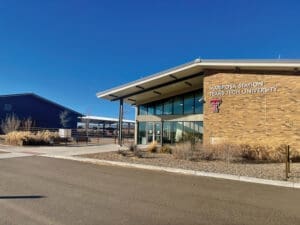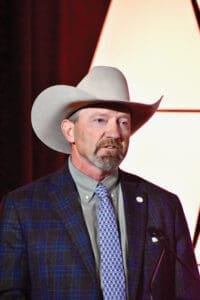By Chris McClure Contributing Editor
We are accustomed to “managing to the average.” It only makes sense that we make management decisions based on what affects, or is affected by, most of the population we are seeking to manage, right? But do we pay attention to the outliers? How do we handle those outliers? What can we learn from them?
The “Bell Curve” view of a pen of cattle can’t be ignored, but perhaps the way we manage the “tails” of that curve can improve outcomes. After all, we are constantly challenged with how to do more with less. Volume and velocity are very basic to almost all businesses. How do we push more cattle through the system in less time while controlling the associated costs is key to putting dollars on the bottom line.
We view “managing to the average” as the best way to achieve efficiency. We aim for when the greatest number of animals are at a desired point in the production cycle with various operational functions such as processing, re-vaccination, implanting, re-implanting and ultimately, shipping to harvest. When we do this, we miss the profit-maximization opportunity on roughly one-third of the animals in the group – the “tails” of the Bell Curve.
We base our entire management scheme on a guess – the guess is that when most of the animals reach a point of optimum “finish” we are managing all these other factors correctly.
We typically view the endpoint for harvesting the cattle as that point when most of the cattle are at, or above, the optimum level of finish. That point means the upper extremes are over finished and the lower extremes are under finished. We have spent too much feed on part of the cattle and not enough on part of the cattle. We are penalized on performance and grades on both groups of cattle. Customarily, we see that “top end” as the high performers and the “bottom end” as the low performers, but what if that isn’t the whole picture? After all, those Bell Curves apply to metrics other than the state of finish of the cattle.
When we look at the individual growth curve for an animal, we see that it is unique. When we aggregate animals into large groups, we get a bell-shaped distribution of those growth curves. The same is true of gain, feed efficiency, disease susceptibility and any other metric you wish to apply. We base our entire management scheme on a guess – the guess is that when most of the animals reach a point of optimum “finish” we are managing all these other factors correctly.
One issue that exacerbates this problem is that we are more focused on the “restaurant” function of cattle feeding than we are the “hotel” function. We build margins into our feed that cover operating expenses and add a profit. This approach is at the expense of the efficiency of the cattle. As an independent cattle feeder, I want efficient cattle. The feedyard makes more money on inefficient cattle because they eat more for every pound produced. The point of diminishing returns for me is hit long before the point of diminishing returns for the feedyard which is probably very different than the point of diminishing returns for the packer. How do we reconcile these different drivers of behavior in a way that makes sense for everyone? As usual, I have more questions than answers, but someone needs to be asking these questions.
One step in the right direction is to charge feed at cost and replace the feed margin with a “hotel” charge, or yardage. This allows me to put efficient cattle on feed without hurting the feedyard’s income. It may make it more predictable. What it doesn’t do is address the issue of non-performers, or realizers. There is still the tendency to keep these poor doers on feed to capture that yardage, when the best management decision for me as feeder would be to take my loss immediately rather than continue to pour feed into an animal that is costing me every day he remains in the pen. I would benefit more by paying a small management fee to have those animals realized than to continue to pour feed into them until they become a statistic under the category of “mortality” on my Closeout.
Those poor doers are just part of the extreme. The rest of that end of the Bell Curve may be extremely efficient animals that just have a slower growth curve. If left on feed long enough, they may reach desired grades rather than being left behind.
The other end of the Bell Curve is also extremely important – it is those animals who should be harvested weeks before the average of the pen, yet are left on feed to the point where every pound added begins to take away the profit that could have been captured if harvest occurred at their optimal finish.
The only way to begin crafting a solution is to sort cattle into groups that will achieve a more uniform outcome.






